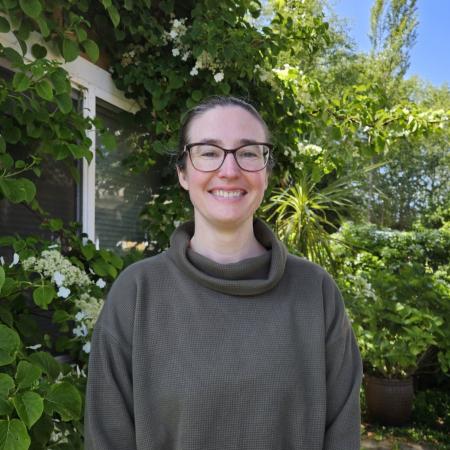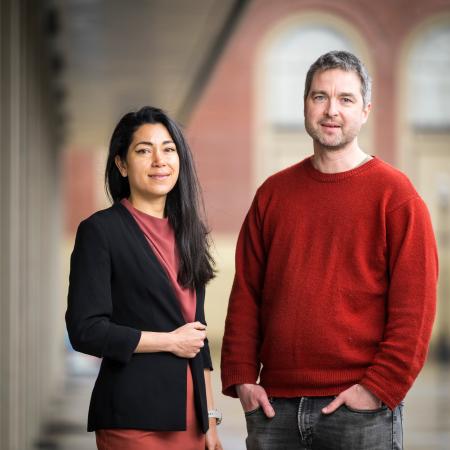The human microbiome—the vast collection of microorganisms living in and on the bodies of humans—can lead us to a better understanding of human health and disease, not to mention accelerate the development of therapeutic drugs. However, the vastness and complexity of microbiome data require advances in statistical methodology and software for an accurate analysis of host-microbiome interactions. Statistics faculty Yuan Jiang, Duo Jiang and Thomas Sharpton are developing novel statistical methods to bridge the gap between the human microbiome and microbiome-based healthcare.
They were awarded a prestigious four-year $770K grant by the National Institute of General Medical Sciences (NIGMS), one of the U.S. National Institutes of Health (NIH). Yuan Jiang, associate professor of statistics, is the lead researcher and principal investigator on the project, “Network-based statistical methods to decode interactions within microbiomes.” Duo Jiang, assistant professor of statistics and Thomas Sharpton, assistant professor of microbiology and statistics, are co-investigators on this grant.
This project will advance scientific understanding of the functions and operations of microbiomes by developing statistical methods and models to study biological interactions between microbes or between microbes and their host.
“The new statistical methodologies will leverage recent advances in graphical models and high dimensional statistics to tackle unmet analytical challenges encountered in the analysis of modern microbiome data,” said Duo Jiang.
Interest in the role of the microbiome in human health and disease has increased rapidly within the last decade. However, available tools and technologies do not adequately capture the full scope and complexities of microbial interactions within a community. For example, a correlation type analysis employed to model microbial interactions cannot filter out misleading co-occurrence patterns in a community: two microbes that independently interact with a third but not with one another may appear to correlate.
“The currently used statistical models fail to account for specific properties of microbiome data, including its heterogeneous compositional count nature, the complex environmental context, and its evolutionary structure,” Yuan Jiang explained.
“Additionally, existing algorithms are often not scalable to the huge size of microbiome data. Therefore, new statistical methods and algorithms need to be developed to better answer the scientific questions.”
The NIGMS grant will help Jiang and his team pioneer new statistical methods “built on conditional dependencies that disentangle biological interactions from marginal correlations to produce mechanistically and evolutionarily relevant network models of how microbes interact with one another and their host.”
The methods and software produced by this project will “transform the discovery of how these microbes interact with one another and influence or respond to human physiology.” A broader understanding of microbiomes and their role in disease etiology will open the doors to engineer and utilize microbiomes important to human health to develop new drugs, therapeutic probiotics and clinical diagnostics.
The grant will support graduate research assistants (GRAs). Two GRAs from statistics and one GRA from microbiology will be a part of this interdisciplinary collaboration. “Such a form provides students with opportunities for experiential learning in diverse scientific areas (e.g., statistics, computer science, microbiology, evolution, and genetics) as well as experience in teamwork and interdisciplinary research,” said Yuan Jiang.




